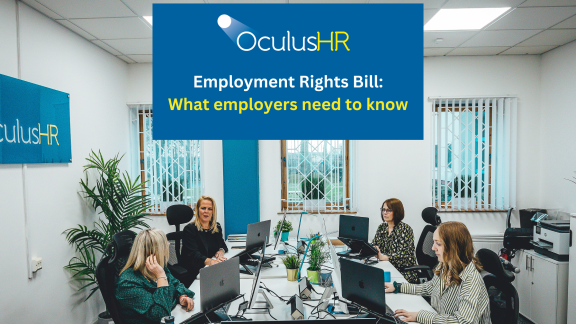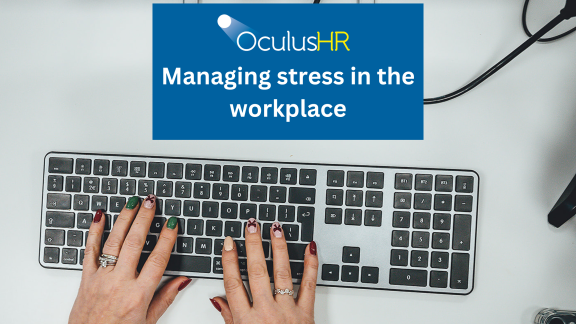Redundancy is one of the most difficult decisions a business owner can face. And right now, it’s an issue affecting more businesses than you might think.
According to the Office for National Statistics (ONS), over 102,000 employees were made redundant between February and April 2025, nearly double the figure recorded in the same period three years earlier. With economic uncertainty still weighing heavily on many sectors, small businesses in particular are having to make tough choices about their workforce.
Whether it’s due to a downturn in business, a restructure, or shifting operational needs, redundancy may sometimes be necessary. But it’s essential that the process is handled properly – not just to stay compliant with employment law, but to maintain trust, morale, and integrity across your team.
Here’s what you need to know to manage redundancy fairly, legally, and with care.
What is redundancy and when is it lawful?
Redundancy occurs when an employer needs to reduce their workforce, usually because the business is closing, relocating, or no longer needs employees to carry out certain types of work. It’s a legitimate business process, but one that must be backed up with clear evidence and handled carefully.
It’s important to remember that redundancy can’t be used to avoid dealing with performance issues or to remove someone for personal reasons. If the reason for redundancy isn’t genuine or the process isn’t followed correctly, businesses may be at risk of unfair dismissal claims.
Common triggers for redundancy in small businesses
For small business owners, redundancy often stems from factors outside their control. A drop in sales, loss of a major contract, or rising costs can all lead to a need to restructure. Shifts in strategy, relocation, or the adoption of new technologies can also reduce the need for certain roles.
And small businesses are certainly feeling the pressure. A recent survey from the CIPD revealed that 32% of UK employers are planning to reduce headcount through redundancies or hiring freezes, a trend largely driven by cost pressures and changing market demands.
Understanding your legal responsibilities
While the redundancy process may feel daunting, it’s important to know that even small employers have clear legal responsibilities.
You’ll need to consult with affected employees before any decisions are made. This might be a relatively informal discussion in a small team, but it still needs to be documented. Employees should have the chance to ask questions, raise concerns, and understand the reason behind the proposal.
If you’re selecting from a pool of employees, your decision must be based on objective criteria. Skills, qualifications, performance, and attendance are all fair considerations, but the process must be transparent, consistent, and free from discrimination.
For employees with more than two years continuous service, statutory redundancy pay will apply. You’ll also need to ensure appropriate notice is given, or pay in lieu is provided. The government’s redundancy calculator is a useful tool to check what’s owed.
Finally, all redundancy decisions should be confirmed in writing, with clear details of the rationale, final pay, and next steps.
Handling redundancy with care
Following the legal process is essential, but redundancy is also a deeply human experience. How you handle it will leave a lasting impression, not just on the employee affected, but on the rest of your team too.
Honest, empathetic communication is key. Share the business reasons for redundancy clearly, listen to concerns, and give people time to take in the news. If you can, offer practical support such as references, job search guidance, or signposting to mental health and financial wellbeing resources.
And don’t forget about the rest of your team. Redundancy can cause uncertainty and anxiety, so keeping the lines of communication is just as important once the decision has been made.
Avoiding common mistakes
Redundancy is a sensitive and legally complex process, and it’s easy to make mistakes without realising. Rushing the decision, failing to consult properly, or using unclear selection criteria can all lead to serious consequences, both legally and in terms of morale.
With the UK redundancy rate currently at 3.5 per 1000 employees, the risk of scrutiny is higher than ever. A misstep not only puts you at risk of tribunal claims, but can also damage your reputation as an employer.
How can Oculus HR help?
If you’re navigating a potential redundancy situation and want to make sure everything is handled correctly, we’re here to help.
We work with small and medium-sized businesses across all sectors, helping you approach redundancy with clarity, compliance, and care. Whether you need help understanding your legal obligations, creating a fair selection process, managing difficult conversations, or supporting your team throughout the transition, we can guide you every step of the way.
Because we know there’s no one-size-fits-all when it comes to managing people, our advice is always practical, straightforward, and tailored to the needs of your business.
Redundancy might be a difficult decision, but you don’t have to face it alone. Get in touch to find out how we can support your business through change.














